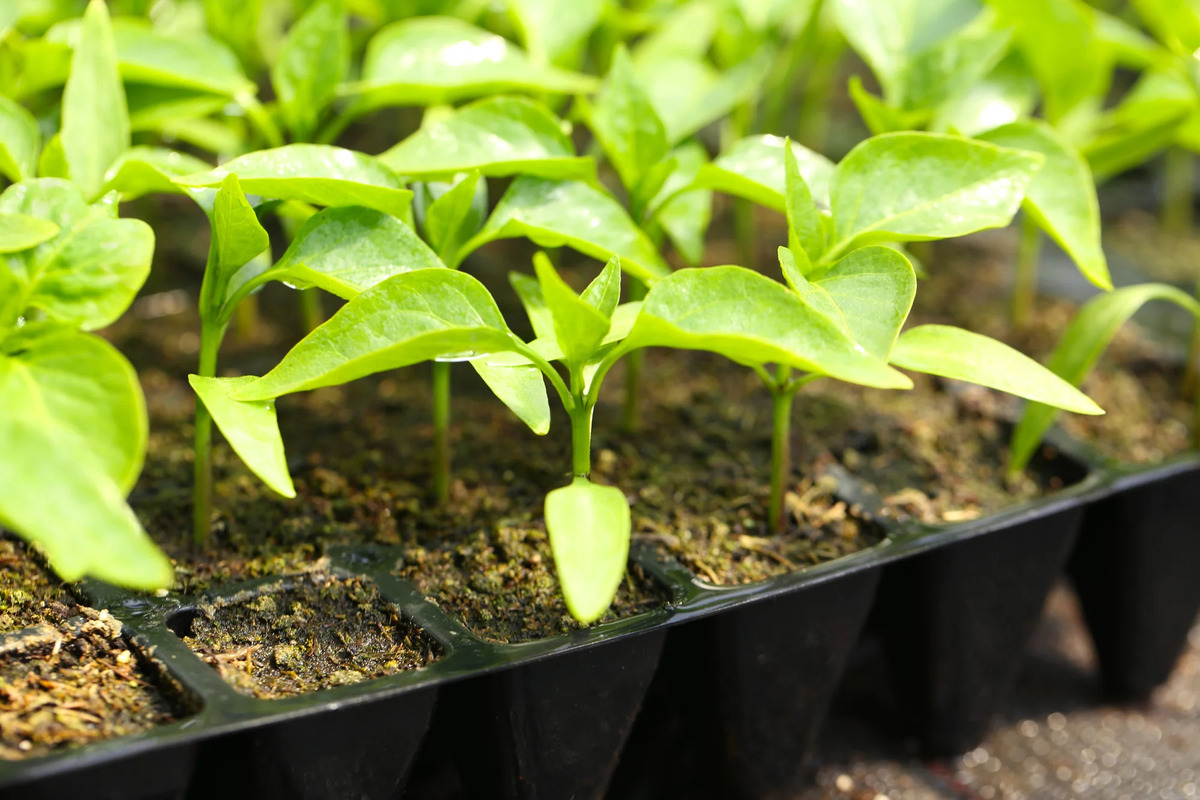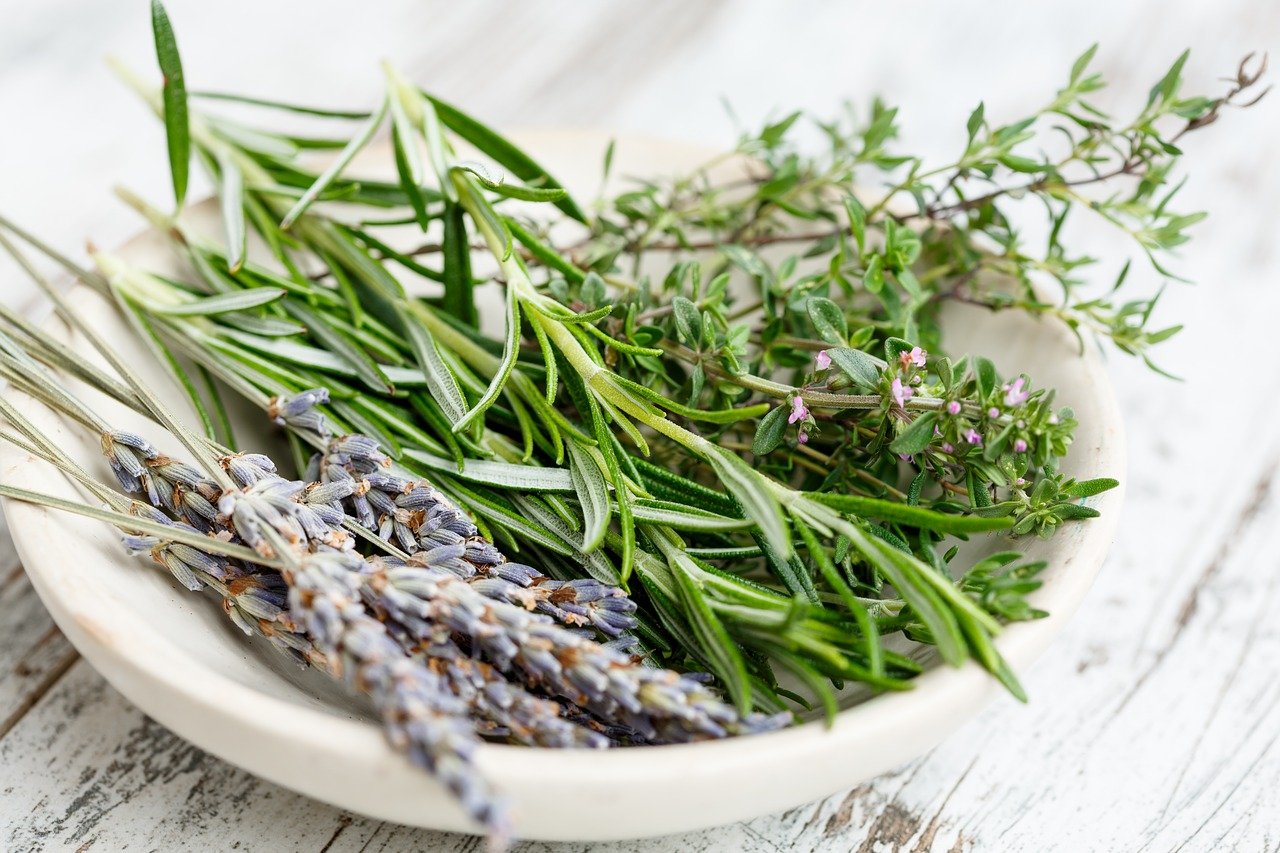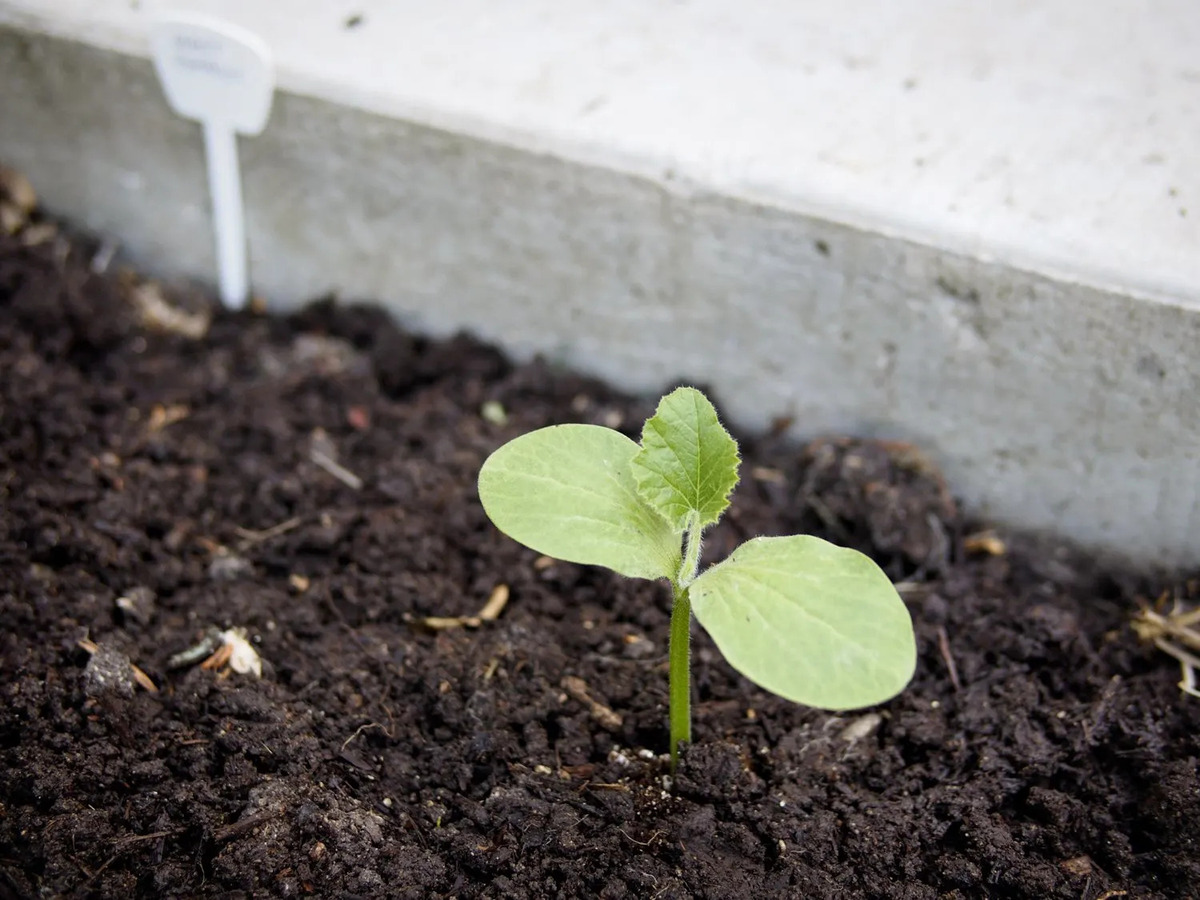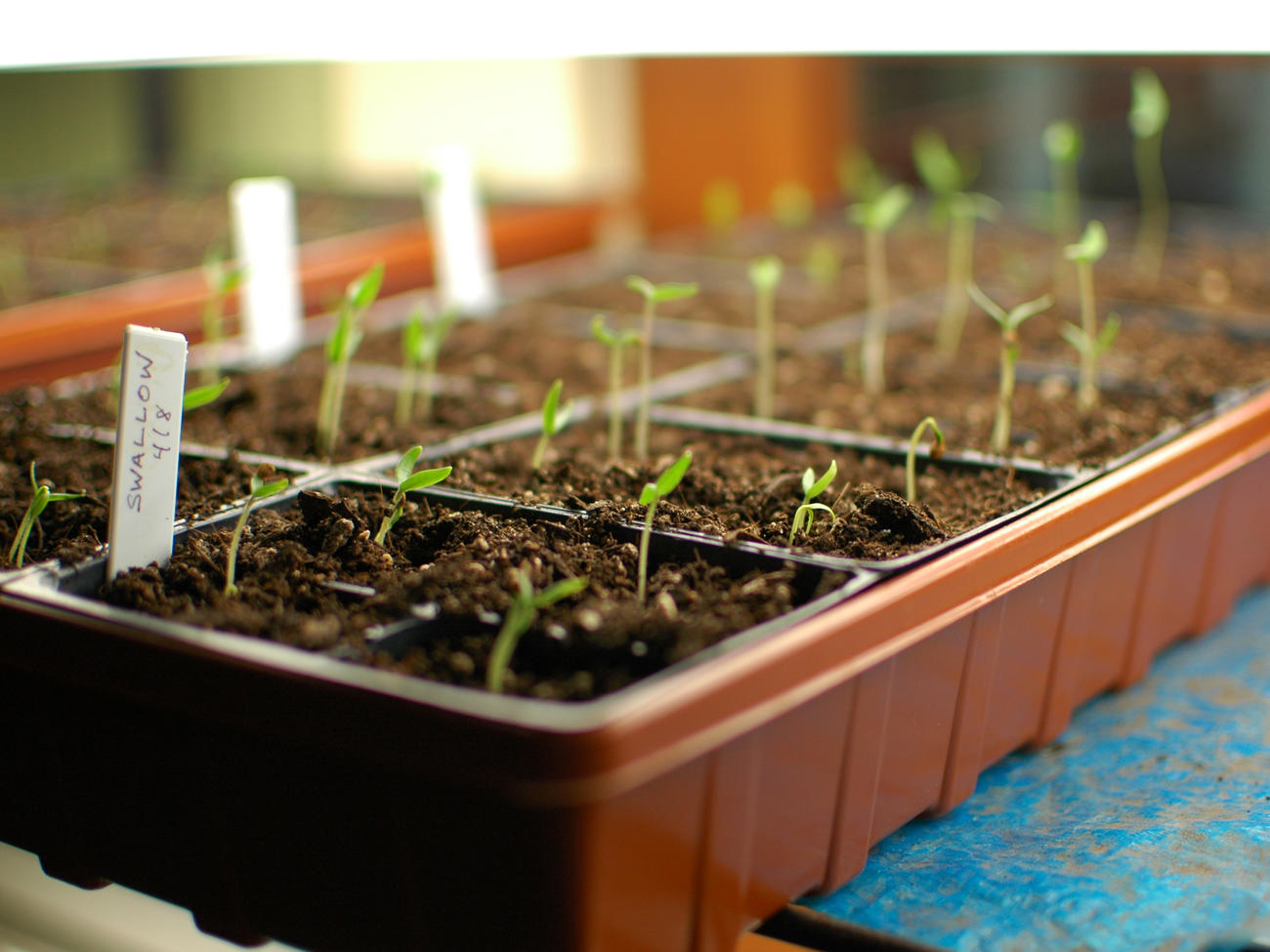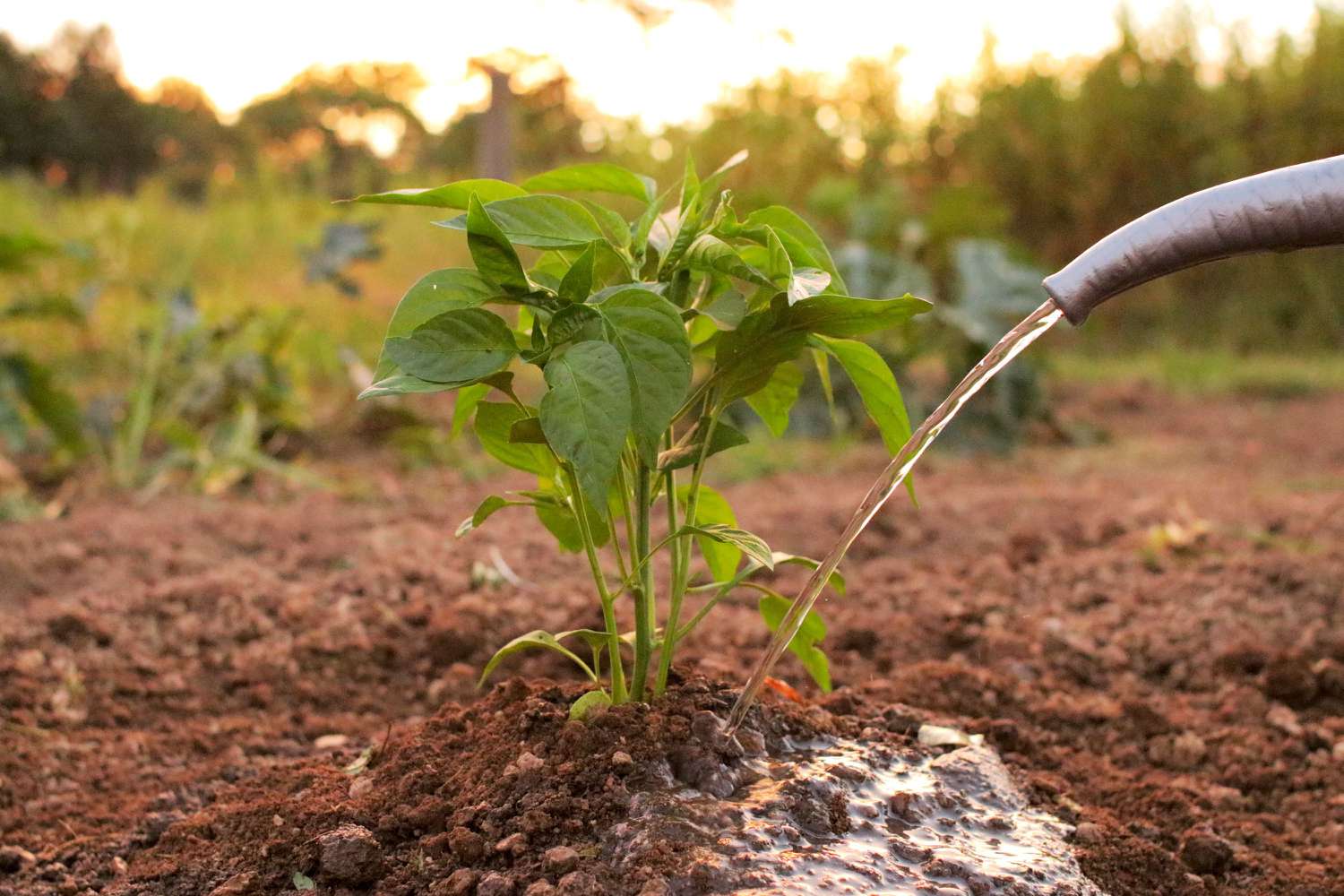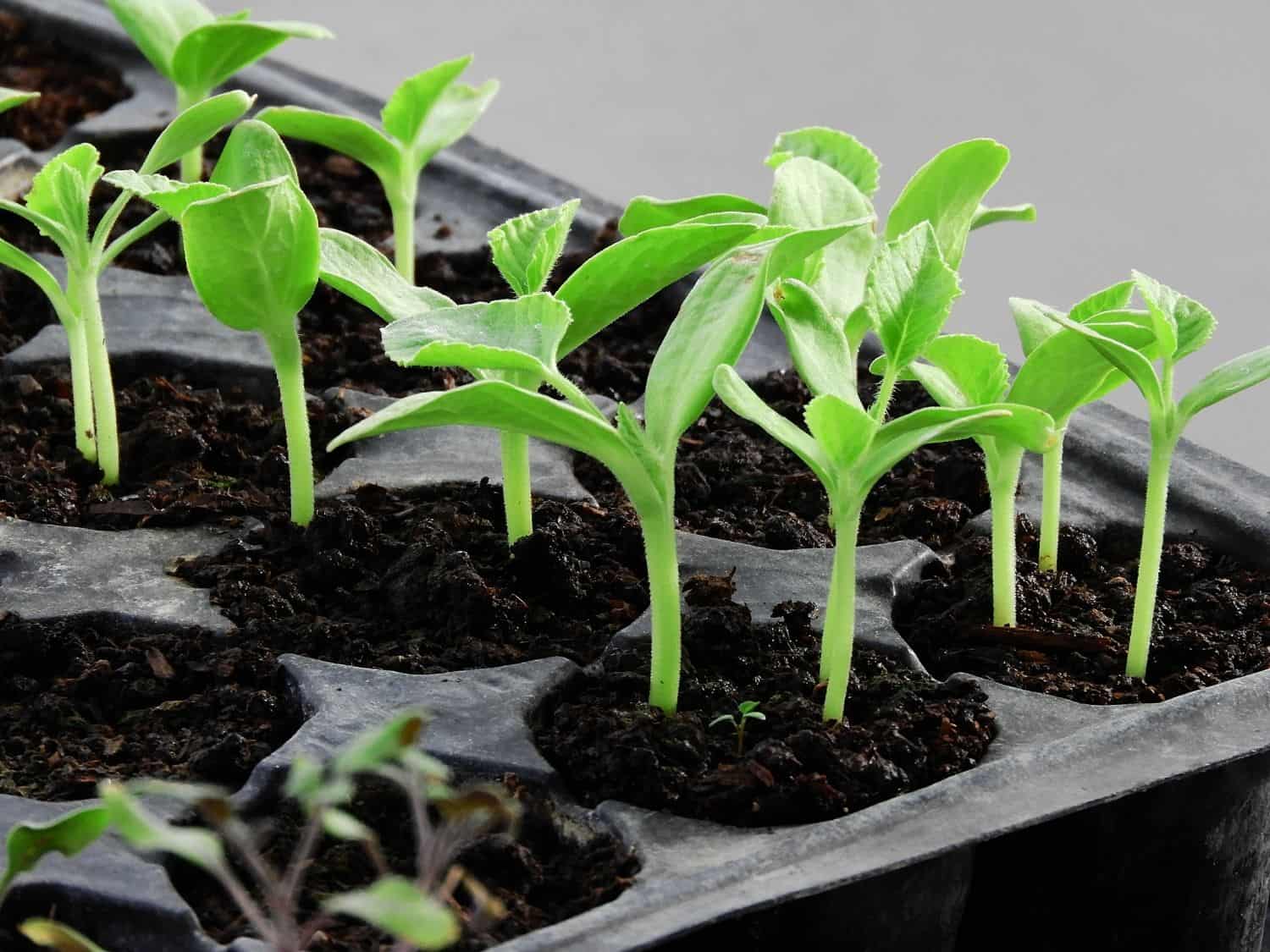Home>Gardening Techniques>Seasonal Gardening>How Cold Can Cabbage Seedlings Tolerate
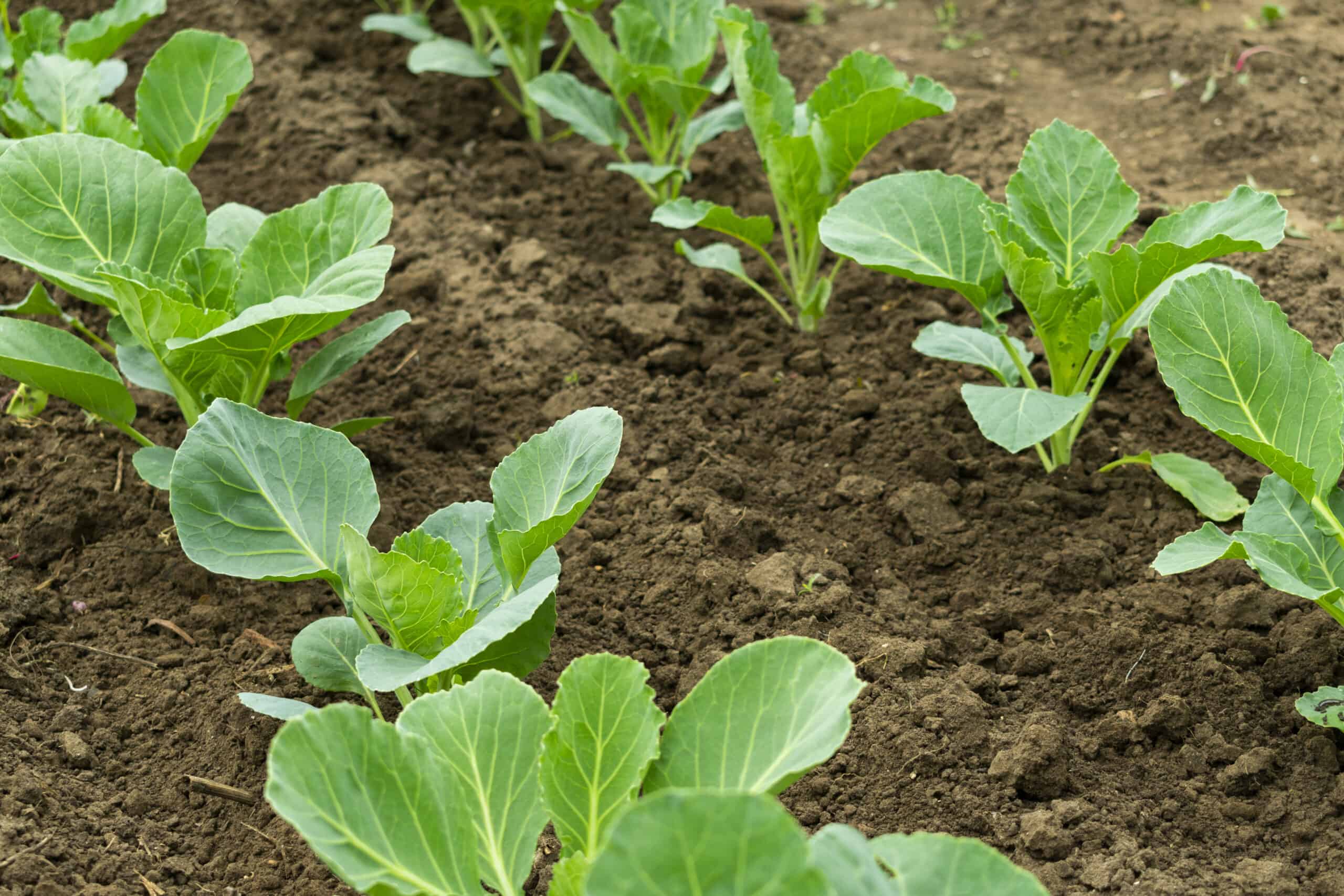

Seasonal Gardening
How Cold Can Cabbage Seedlings Tolerate
Published: January 3, 2024
Discover how cabbage seedlings can withstand cold temperatures in seasonal gardening. Learn about their tolerance and strategies for successful cultivation.
(Many of the links in this article redirect to a specific reviewed product. Your purchase of these products through affiliate links helps to generate commission for Chicagolandgardening.com, at no extra cost. Learn more)
Table of Contents
- Introduction
- Factors Affecting Cold Tolerance in Cabbage Seedlings
- Optimal Growing Temperatures for Cabbage Seedlings
- Cold Tolerance Mechanisms in Cabbage Seedlings
- Signs of Cold Stress in Cabbage Seedlings
- How to Protect Cabbage Seedlings from Cold Temperatures
- Tips for Hardening Off Cabbage Seedlings
- Conclusion
Introduction
Welcome to the world of seasonal gardening, where each time of year presents unique challenges and opportunities for growing a beautiful garden. One key aspect of successful gardening is understanding the specific needs of different plants during different seasons. In this article, we will be focusing on the cold tolerance of cabbage seedlings and how to ensure their survival during chilly weather.
Cabbage, a leafy green vegetable belonging to the Brassica family, is a popular choice for home gardens due to its versatility and nutritional value. Whether you’re a seasoned gardener or just starting out, it’s important to know how cabbage seedlings respond to cold temperatures and what measures you can take to protect them.
Understanding the factors that affect the cold tolerance of cabbage seedlings is crucial in preventing frost damage and ensuring their healthy growth. Additionally, learning about the optimal growing temperatures and the mechanisms that cabbage seedlings employ to tolerate the cold will help you make informed decisions when caring for your plants.
Recognizing the signs of cold stress in cabbage seedlings is also essential to intervene in a timely manner and prevent any long-lasting damage. By being vigilant and taking necessary precautions, you can shield your cabbage seedlings from the adverse effects of cold weather.
In this article, we will also discuss practical tips for protecting cabbage seedlings from cold temperatures. From providing proper insulation to implementing effective hardening-off techniques, you’ll discover various strategies that can help your cabbage seedlings thrive despite the chilly conditions.
So whether you’re a gardening enthusiast or a beginner looking to venture into the world of seasonal gardening, this article will provide you with valuable insights and guidance on how to ensure the cold tolerance and survival of your cabbage seedlings. Let’s dive in!
Factors Affecting Cold Tolerance in Cabbage Seedlings
Several factors determine the cold tolerance of cabbage seedlings, and understanding these factors can help you create optimal growing conditions for your plants. Let’s delve into the key factors that influence the ability of cabbage seedlings to withstand cold temperatures.
1. Variety: Different cabbage varieties have varying levels of cold tolerance. Some varieties, such as ‘January King’ and ‘Savoy Ace,’ exhibit high cold tolerance and can withstand freezing temperatures more easily. On the other hand, varieties like ‘Early Jersey Wakefield’ are less tolerant to cold and require more protection.
2. Age: The age of the cabbage seedlings plays a significant role in their cold tolerance. Young seedlings that have recently emerged from the soil are generally less tolerant to cold compared to more mature plants. As cabbage seedlings grow and develop, their ability to withstand colder temperatures increases.
3. Environmental Conditions: The prevailing environmental conditions, such as air temperature, soil temperature, and humidity, have a direct impact on the cold tolerance of cabbage seedlings. Freezing temperatures, especially when combined with high humidity or moisture, can be particularly damaging to seedlings.
4. Hardening Off: The process of hardening off is crucial for improving the cold tolerance of cabbage seedlings. Hardening off involves gradually exposing seedlings to outdoor conditions, such as lower temperatures and increased sunlight, to acclimate them to the outdoor environment. Properly hardened-off seedlings are better equipped to handle cold temperatures.
5. Nutrition and Watering: Providing adequate nutrition and proper watering can enhance the overall health and resilience of cabbage seedlings. Well-nourished and properly hydrated seedlings are better prepared to withstand the stress of cold temperatures.
6. Timing of Planting: The timing of planting cabbage seedlings can impact their cold tolerance. Planting too early in the spring or too late in the fall can expose the seedlings to more extreme cold conditions, increasing the risk of cold damage.
By considering these factors and taking appropriate measures, you can optimize the cold tolerance of your cabbage seedlings. In the next section, we will explore the optimal growing temperatures for cabbage seedlings, which will further enhance your understanding of cabbage cultivation.
Optimal Growing Temperatures for Cabbage Seedlings
Creating the right environment for your cabbage seedlings is crucial for their healthy growth and development. Understanding the optimal temperatures for cabbage cultivation will help you provide the ideal conditions for your plants. Let’s explore the temperature requirements of cabbage seedlings.
Cabbage seedlings prefer cool temperatures for their growth. The optimal temperature range for seed germination is between 60 to 75 degrees Fahrenheit (15 to 24 degrees Celsius). Once the seedlings have emerged, maintaining temperatures between 50 to 65 degrees Fahrenheit (10 to 18 degrees Celsius) is ideal for their continued growth.
However, it’s important to note that extreme heat or cold can be detrimental to cabbage seedlings. High temperatures above 80 degrees Fahrenheit (27 degrees Celsius) can cause the seedlings to bolt and turn bitter. Similarly, freezing temperatures below 25 degrees Fahrenheit (-4 degrees Celsius) can lead to frost damage and even kill the seedlings.
Providing adequate insulation and protection during extreme temperature fluctuations is essential for the survival of your cabbage seedlings. Using row covers, cold frames or providing shade during hot periods can help regulate the temperature and protect the seedlings from stress.
Furthermore, maintaining consistent soil temperatures is equally important. The soil temperature for cabbage seedlings should ideally be between 45 to 80 degrees Fahrenheit (7 to 27 degrees Celsius). Soil that is too cold can hinder root development, while excessively warm soil can lead to poor germination or stunted growth.
Proper watering techniques are also vital for maintaining optimal temperatures. Overwatering can cool the soil excessively, while underwatering can increase the risk of heat stress. Aim to keep the soil consistently moist, but not waterlogged, to promote healthy growth.
By ensuring the cabbage seedlings are exposed to the right temperature range and providing the necessary protection during extreme weather conditions, you can foster optimal growth and increase their cold tolerance. In the next section, we will explore the mechanisms that cabbage seedlings employ to tolerate cold temperatures.
Cold Tolerance Mechanisms in Cabbage Seedlings
Cabbage seedlings possess several mechanisms that enable them to tolerate cold temperatures. Understanding these mechanisms can help you appreciate the resilience of these plants and implement strategies to support their survival. Let’s explore some of the key mechanisms cabbage seedlings employ to withstand the cold.
1. Cold Acclimation: Cabbage seedlings have the ability to undergo a process called cold acclimation. This process involves gradual exposure to cooler temperatures, which triggers physiological changes in the plants. During cold acclimation, cabbage seedlings produce antifreeze proteins and increase the concentration of sugars and other compounds in their cells. These adaptations protect the plant tissues from freezing and damage.
2. Cell Membrane Stability: Maintaining the stability of cell membranes is crucial for cabbage seedlings’ survival during cold temperatures. The cell membranes of cold-tolerant cabbage varieties are more resistant to freezing, preventing them from breaking down and causing damage to the plant’s vital structures.
3. Dehydration Tolerance: Cabbage seedlings have the ability to tolerate water loss during cold temperatures. This ability helps them avoid ice crystal formation within the cells, which can lead to cell damage. By effectively managing water loss, cabbage seedlings can withstand freezing temperatures without significant harm.
4. Metabolic Adjustments: Cold temperatures can affect the metabolic processes of cabbage seedlings. To counteract this, the plants adjust their metabolic rate by increasing the production of specific enzymes and proteins. These adjustments help the seedlings maintain normal cellular functions, even in cold conditions.
5. Root Development: Strong and well-developed root systems contribute to the cold tolerance of cabbage seedlings. Healthy roots enable efficient nutrient uptake, ensuring the plants receive the necessary resources to sustain themselves during cold periods.
By harnessing these mechanisms, cabbage seedlings are able to endure cold temperatures and continue their growth and development. However, it’s important to remember that even with these built-in adaptations, cabbage seedlings still require proper care and protection during extreme weather conditions.
In the next section, we will discuss the signs of cold stress in cabbage seedlings, which will help you identify if your plants are experiencing any negative effects from the cold and take appropriate measures to mitigate the damage.
Signs of Cold Stress in Cabbage Seedlings
When exposed to cold temperatures, cabbage seedlings may experience stress that can negatively impact their growth and survival. It’s important to be able to recognize the signs of cold stress so that you can take prompt action to protect and support your plants. Here are some common signs to look out for:
1. Purple or Red Coloration: Cabbage seedlings that are exposed to cold temperatures may develop purple or red coloration on their leaves. This discoloration is an indication of anthocyanin production, which occurs as a response to cold stress. The presence of this coloration can be a signal that the seedlings are experiencing cold-induced stress.
2. Stunted Growth: Cold stress can inhibit the growth and development of cabbage seedlings. If you notice that your plants are not growing as expected or if their growth appears stunted compared to healthy seedlings, it could be a sign that they are struggling to cope with the cold temperatures.
3. Wilting or Drooping: Cold temperatures can cause cabbage seedlings to wilt or droop. The low temperatures hinder the ability of the plants to absorb water and essential nutrients, leading to dehydration. If your seedlings appear wilted or are drooping, it may be an indication that they are experiencing cold stress.
4. Leaf Damage: Freezing temperatures can cause physical damage to the leaves of cabbage seedlings. You may notice dark spots or a water-soaked appearance on the leaves, indicating frost damage. In severe cases, the leaves may become mushy or show signs of necrosis due to the freezing of plant tissues.
5. Delayed Development: Cold stress can delay the developmental milestones of cabbage seedlings. If you observe that your seedlings are not progressing as expected or if they are lagging behind in terms of leaf formation or overall growth, it may be due to the adverse effects of cold temperatures.
If you notice any of these signs in your cabbage seedlings, it’s important to take immediate action to protect them from further damage. Providing insulation, such as using row covers or creating temporary shelters, can help shield the seedlings from the cold. Additionally, adjusting watering practices to provide adequate moisture can aid in their recovery.
In the next section, we will explore effective strategies for protecting cabbage seedlings from cold temperatures, allowing them to thrive even in chilly conditions.
How to Protect Cabbage Seedlings from Cold Temperatures
Protecting cabbage seedlings from cold temperatures is essential to ensure their survival and promote healthy growth. By implementing the following strategies, you can shield your seedlings from the adverse effects of chilly weather:
1. Row Covers and Season Extenders: Using row covers or season extenders, such as cloches or cold frames, can provide a protective barrier against cold temperatures. These covers trap heat and create a microclimate around the seedlings, helping to maintain higher temperatures and shield the plants from frost.
2. Mulching: Applying a layer of organic mulch, such as straw or wood chips, around the base of the cabbage seedlings can help insulate the soil and regulate its temperature. Mulching also helps retain moisture in the soil, which is beneficial for the overall health of the plants.
3. Watering Techniques: Proper watering practices play a crucial role in protecting cabbage seedlings from the cold. Water the plants early in the day so that the foliage has time to dry before temperatures drop in the evening. Wet foliage in cold temperatures can increase the risk of frost damage.
4. Temporary Shelters: Creating temporary shelters around the cabbage seedlings, such as using PVC frames covered with plastic sheeting, can provide additional protection against cold temperatures, wind, and frost. These shelters can be easily assembled and disassembled as needed.
5. Choose the Right Planting Location: Planting cabbage seedlings in a location that offers some natural protection against cold, such as against a south-facing wall or near taller plants that provide shade, can help mitigate the effects of cold temperatures. These natural barriers can act as windbreaks and provide a small microclimate for the seedlings.
6. Timing of Planting: Consider the optimal timing for planting cabbage seedlings based on your region’s climate and the specific variety being grown. Planting too early or too late in the season can increase the risk of exposure to extreme cold temperatures. Consult local gardening resources or extension services for guidance on the appropriate planting times for your area.
7. Hardening Off: Gradually acclimating cabbage seedlings to outdoor conditions before transplanting is crucial for their cold tolerance. Hardening off involves exposing the plants to outdoor temperatures for increasing durations over a period of one to two weeks. This process prepares the seedlings for the rigors of the external environment, including cooler temperatures.
By implementing these protective measures, you can safeguard your cabbage seedlings from the challenges of cold temperatures, ensuring their healthy growth and survival. Remember to monitor weather forecasts and take action accordingly to provide the necessary protection as the seasons change.
In the next section, we will discuss effective tips for hardening off cabbage seedlings, which will further enhance their ability to withstand the cold.
Tips for Hardening Off Cabbage Seedlings
Hardening off cabbage seedlings is a crucial step in their transition from a controlled indoor environment to the outdoor conditions. This process prepares the plants for the colder temperatures and fluctuations they will encounter. Here are some tips to help you effectively harden off your cabbage seedlings:
1. Gradual Exposure: Start the hardening off process by gradually exposing the seedlings to outdoor conditions. Begin with a few hours of exposure each day, gradually increasing the duration over the course of one to two weeks. This gradual approach allows the seedlings to adjust to the changes in temperature, wind, and sunlight.
2. Choose Optimal Weather Conditions: Select days with mild weather for the initial exposure of your cabbage seedlings. Avoid extremely hot or cold days, heavy winds, or periods of heavy rainfall. Optimal conditions will help minimize stress on the plants during the hardening off process.
3. Time of Day: Initially, expose the cabbage seedlings to outdoor conditions during the milder parts of the day, such as in the morning or late afternoon. This allows the plants to acclimate to the outdoor temperatures without being exposed to the hottest or coldest parts of the day.
4. Protect from Extreme Conditions: During the hardening off process, be prepared to protect your cabbage seedlings from extreme temperature fluctuations or unexpected weather events. Use row covers, temporary shelters, or bring the seedlings indoors if the weather becomes too extreme for their tender nature.
5. Increase Sunlight Exposure: Gradually increase the amount of sunlight exposure that your cabbage seedlings receive. This helps them adapt to the intensity of outdoor sunlight. However, be cautious of excessive sun exposure, especially in the early stages, as it can cause sunburn or heat stress.
6. Monitor Soil Moisture: Check the moisture level of the soil throughout the hardening off process. Outdoor conditions can dry out the soil faster, so make sure to water the seedlings as needed to ensure they don’t get dehydrated. Avoid overwatering, which can lead to waterlogged soil and root rot.
7. Maintain Air Circulation: Provide adequate airflow around the cabbage seedlings during the hardening off period. This helps prevent the buildup of humidity, which can increase the risk of fungal diseases. A gentle breeze or strategically placing fans can help promote good airflow.
8. Observe and Adjust: Pay close attention to how your cabbage seedlings are responding to the hardening off process. Note any signs of stress, such as wilting or discoloration, and make necessary adjustments in exposure time or environmental conditions to ensure the seedlings are not overwhelmed.
By following these tips, you can successfully harden off your cabbage seedlings, preparing them for the outdoor conditions and increasing their resilience to cold temperatures. Remember, each plant may have different needs, so observe and adjust accordingly to ensure the best results.
In the final section, we will wrap up and summarize the key points discussed throughout this article.
Conclusion
Cabbage seedlings, like any other plants, require careful attention and consideration of their needs, especially when it comes to cold weather conditions. By understanding the factors that affect cold tolerance, knowing the optimal growing temperatures, and being aware of the mechanisms and signs of cold stress, you can better protect and support your cabbage seedlings.
Implementing strategies such as using row covers, mulching, and providing temporary shelters can shield the seedlings from cold temperatures. Proper watering techniques, timing of planting, and gradually exposing them to outdoor conditions through the hardening off process are also crucial for their resilience.
Remember to monitor weather conditions and adjust your care accordingly. Cold stress can set in quickly and impact the growth and survival of your cabbage seedlings. By being observant and proactive, you can minimize the risk of damage and help your seedlings thrive in challenging weather conditions.
Seasonal gardening brings its own set of challenges and joys. Understanding the specific needs of your cabbage seedlings during the colder months will enable you to create an environment that promotes their optimal growth and ensures their successful cultivation.
So, whether you’re growing cabbage seedlings for a bountiful harvest or simply for the joy of nurturing plants, applying the knowledge and strategies outlined in this article will help you navigate the seasonal challenges and enjoy the rewards of a thriving garden.
